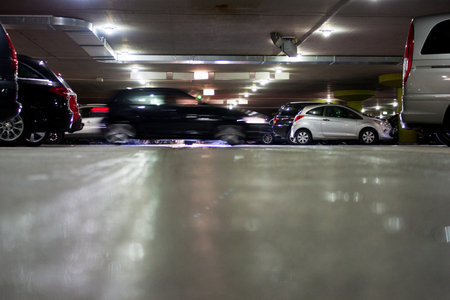Introduction to Pedestrian Detection
When you think back to the golden age of American automobiles—those chrome-clad classics rumbling down wide-open highways—driver and pedestrian safety was a matter of vigilance and good fortune. Fast-forward to today, and the landscape of road safety has changed dramatically. With bustling city streets and ever-growing suburban neighborhoods, the necessity for advanced safety systems has become crystal clear. Enter pedestrian detection technology: an ingenious solution crafted to meet the needs of modern life. This innovation is not just a convenience; it’s a testament to how far automotive engineering has come in prioritizing human life on our roads. As we explore the evolution of pedestrian detection in American vehicles, we’ll discover how this essential technology is reshaping the way we drive, making every journey safer for drivers and pedestrians alike.
2. Core Technologies Behind Detection Systems
In the heart of every modern pedestrian detection system lies a blend of innovative technologies, each echoing the legacy of classic American ingenuity. Automakers have embraced radar, cameras, and lidar—three pillars that form a robust safety net for both drivers and pedestrians. Let’s take a closer look at these core technologies and understand how their unique strengths come together to create a safer driving experience.
Radar: The Reliable Workhorse
Radar, a time-honored staple in automotive safety, uses radio waves to detect objects and measure their distance and speed. Its reliability shines through thick fog or heavy rain—conditions where other sensors might falter. Classic yet ever-evolving, radar remains the backbone of many detection systems on American roads.
Cameras: The Sharp-Eyed Observer
High-resolution cameras bring an extra layer of perception by capturing detailed images of the vehicle’s surroundings. With advanced image processing algorithms, they can identify pedestrians, recognize traffic signs, and even read road markings. Their visual clarity provides vital context that radar alone cannot achieve.
Lidar: The Precision Sculptor
Lidar technology maps the environment in three dimensions using laser pulses, offering pinpoint accuracy in object detection. It excels at distinguishing shapes and sizes—even identifying a child stepping off the curb or someone crossing with a bicycle. This craftsman’s touch helps vehicles anticipate and react to unpredictable urban scenarios.
Comparing Pedestrian Detection Technologies
| Technology | Strengths | Limitations |
|---|---|---|
| Radar | All-weather performance; measures distance & speed accurately | Limited object classification; less detail than cameras/lidar |
| Cameras | Detailed imagery; recognizes colors, shapes, and signs | Affected by lighting/weather; requires complex image processing |
| Lidar | High-precision 3D mapping; excellent object differentiation | Higher cost; performance may drop in adverse weather |
The Art of Integration: A Modern Classic Approach
The magic happens when these technologies are woven together—radar’s reliability, the camera’s keen eye, and lidar’s sculpted precision. This harmonious blend is reminiscent of Detroit’s golden era: solid craftsmanship meeting modern innovation. By combining their strengths, today’s vehicles offer drivers unmatched situational awareness and help safeguard pedestrians on bustling American streets.
![]()
3. How Pedestrian Detection Works in Everyday Driving
Step into the driver’s seat of a modern vehicle, and you’ll find yourself at the crossroads of tradition and innovation. Pedestrian detection technology is like having an extra set of vigilant eyes, quietly scanning the road ahead—whether you’re weaving through the energy of a downtown avenue or coasting along peaceful suburban streets. So, how does this remarkable safety feature actually work in the real world?
The Sensing Symphony
First, it all begins with an array of sensors—think cameras discreetly nestled near your windshield, radar units humming behind your grille, and even ultrasonic sensors echoing from your bumpers. These devices form a high-tech orchestra, constantly gathering data about your surroundings in real time.
Seeing with Artificial Intelligence
Next comes the magic: sophisticated onboard computers process the incoming information using advanced machine learning algorithms. The system analyzes shapes, movement patterns, and distances to pick out people from other objects like cars, bikes, or signposts. Thanks to millions of miles’ worth of training data, these digital brains can recognize pedestrians wearing anything from summer shorts to winter coats—even when light conditions aren’t ideal.
From Sighting to Safety
If a pedestrian is detected—maybe a jogger emerging between parked cars or a child chasing a ball—the vehicle’s system determines their likely path. If there’s a risk of collision, your car will alert you with beeps, dashboard flashes, or even gentle steering nudges. In some cases, if you don’t react quickly enough, automatic emergency braking steps in to help avoid an accident or reduce its severity.
This seamless process brings peace of mind to every journey, blending classic driving sensibilities with state-of-the-art safety—a testament to how far automotive craftsmanship has come while keeping our most vulnerable road users front and center.
4. Safety Benefits and Real-World Impact
When it comes to making American roads safer, pedestrian detection technology has become a true game-changer. Gone are the days when drivers relied solely on sharp eyes and quick reflexes, like back in the golden age of classic cars cruising down Route 66. Today’s vehicles are equipped with advanced sensors and cameras that can spot a person stepping off the curb, even in low visibility or bustling downtown traffic.
How Pedestrian Detection Improves Safety
This technology doesn’t just alert drivers—it often steps in to brake automatically if a collision seems imminent. The result? Fewer accidents, less heartbreak, and more peace of mind for families crossing Main Street or kids darting out after an ice cream truck. Here’s a look at how pedestrian detection stacks up against traditional driving:
| Scenario | Without Pedestrian Detection | With Pedestrian Detection |
|---|---|---|
| Nighttime Crossing | High risk; limited visibility for driver | Sensors detect and warn or brake automatically |
| Busy Urban Intersection | Driver distraction increases danger | System monitors for unexpected movement |
| School Zones | Relies on driver vigilance alone | Alerts given for sudden child movement |
Nostalgic Stories: Then and Now
Let’s take a trip down memory lane. Decades ago, my grandfather would tell tales about his first Chevy pickup—how he’d slow to a crawl near the town square just in case someone dashed across the street. It was all about anticipation and trust in human judgment. Fast forward to today, and I watched my own kids safely cross at a busy crosswalk as our family SUV gently braked itself, the dashboard chiming a friendly warning. The difference is night and day—technology now adds a reliable extra layer of protection that brings comfort to every journey.
The Real-World Impact Across America
The ripple effect of these advancements is felt coast to coast. According to recent studies by the National Highway Traffic Safety Administration (NHTSA), vehicles equipped with pedestrian detection systems have significantly reduced pedestrian-related accidents in cities like Boston, Chicago, and Los Angeles. This technology is not just an upgrade—it’s reshaping American driving culture, blending modern innovation with our timeless commitment to keeping every neighbor safe.
5. Challenges and Limitations
Despite the impressive strides made in pedestrian detection technology, modern vehicles still face a range of challenges that make perfect safety an ever-evolving target. Inclement weather stands as a classic adversary; rain, snow, and fog can obscure sensors and cameras, reducing their accuracy just when drivers need them most. Even the best systems may struggle to differentiate between a pedestrian and an object during a sudden Midwest thunderstorm or a New England blizzard.
Nighttime detection is another hurdle rooted in real-world unpredictability. Low light conditions, combined with streetlights casting long shadows, can confuse algorithms and diminish response times. While infrared sensors and advanced processing help bridge the gap, the technology is still chasing that nostalgic dream of total reliability under the stars.
Then there’s the quirky reality of American roads. From jaywalkers darting across busy intersections in downtown Chicago to children chasing soccer balls in suburban neighborhoods, human behavior adds layers of complexity no algorithm can perfectly anticipate. Add in construction zones, parked cars blocking sightlines, or cyclists weaving through traffic, and you get a sense of how truly challenging it is for any system to consistently identify pedestrians.
As we look back at the long road traveled by automotive engineers—from handcrafted bumpers to today’s AI-driven marvels—we recognize that pedestrian detection is both a triumph of modern ingenuity and a work in progress. The ambition remains timeless: to blend classic care for human life with the precision of tomorrow’s technology.
6. What the Future Holds
Gaze into the future, and you’ll see that pedestrian detection technology is just hitting its stride. As sensors become sharper and artificial intelligence more sophisticated, modern vehicles are set to transform how we navigate America’s roads. The synergy of radar, lidar, and advanced camera systems means tomorrow’s cars won’t just see what’s in front of them—they’ll anticipate movement, recognize intent, and react faster than ever before.
Americans have always had a special relationship with their cars. From classic cruisers on Route 66 to today’s electric SUVs humming down city streets, innovation has been at the heart of this love affair. Now, this spirit of progress fuels a new era: self-driving features powered by pedestrian detection promise to make roads safer for everyone—drivers, walkers, and cyclists alike.
The road ahead is paved with possibilities. Imagine vehicles communicating with each other and with smart city infrastructure to further reduce accidents. Picture software updates sent wirelessly to enhance detection accuracy over time or collaborative efforts between automakers and tech giants to build smarter mobility ecosystems. Each leap forward carries echoes of Detroit’s golden age—when ingenuity turned wrenches into dreams.
As we look forward, one thing remains clear: America’s passion for the open road drives engineers, designers, and inventors to constantly improve vehicle safety. Pedestrian detection technology stands as a testament to how far weve come—and as a promise of even safer journeys ahead.

